
The Romans made it all the way to England during the peak of their empire. This is common knowledge to historians and those who have read the first book of the Falco series by Lindsey Davis. The English took well to the commerce and markets but the highland clans were a different matter. Emperor Hadrian decided to build a wall from coast to coast across England to keep the Scottish Barbarians out and regulate the trade across the frontier. We started our trip along the wall in Carlisle Castle, built at the beginning of the last millennium. Mary Queen of Scots was imprisoned in the castle for a while, before being taken further south.
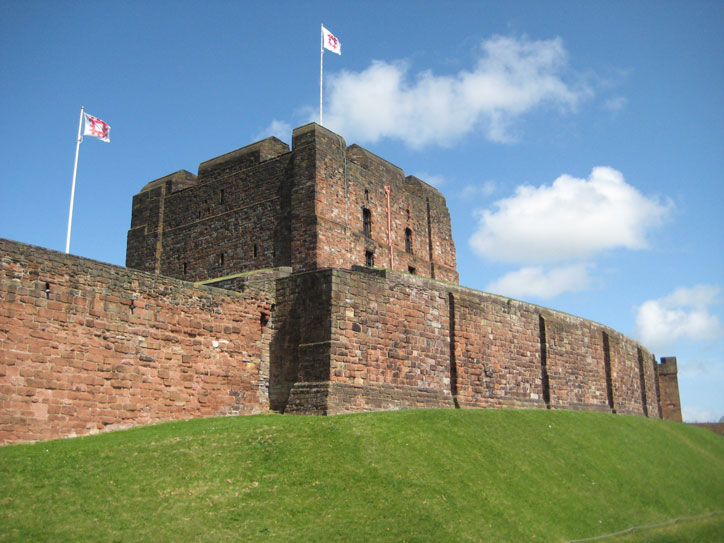
From there we made our way to a more religious ruin, the Lanercost Priory. The priory is stunning since its missing roof sections make for some great pictures (the front section is still roofed and serves as a working church).
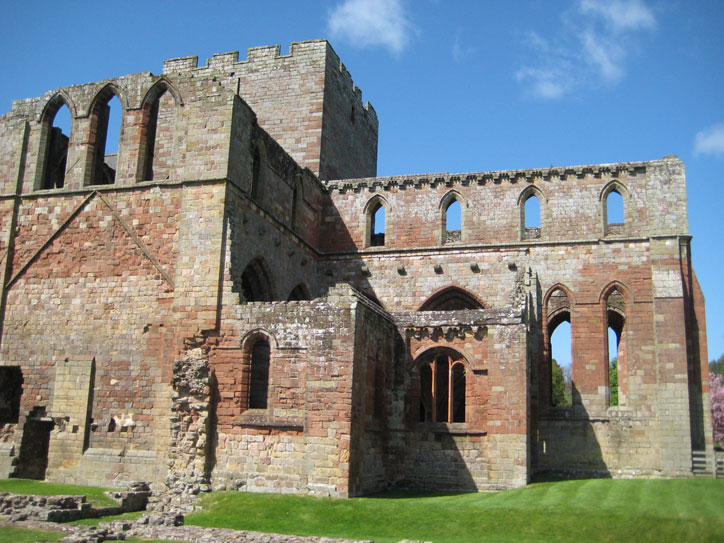
Finally we headed to the first section of the wall. We learned that it was started in the early second century by Emperor Hadrian and originally extended from Carlisle (then Luguvalium) to Newcastle upon Tyne.
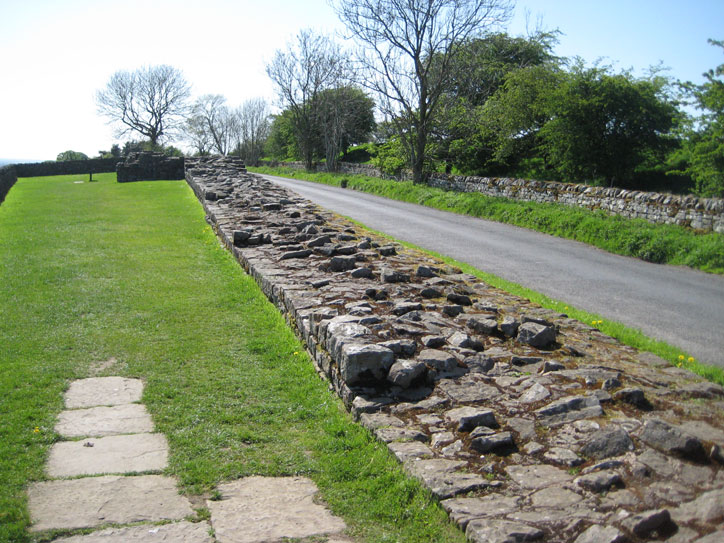
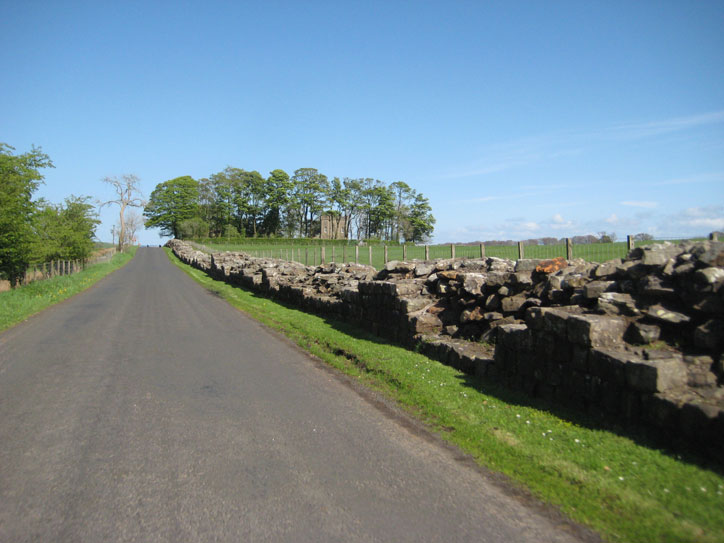
The road ran right alongside the wall and we were a bit disappointed to find it so small and unimpressive. Especially me, who had been talking it up to Nora for days trying to get her ready for our 20 km walk along the wall. Luckily right ahead (the small tower in the above picture) was a museum and the remains of the old roman fort of Birdoswald. The Roman’s built these forts all along the wall, exactly one roman mile apart, to house their soldiers. Most of these mile forts were smaller versions of Birdoswald but many of them are treasure troves for artifacts since approximately 500 Romans lived in each fort. (It takes a large number of soldiers to patrol 117 km of wall 24 hours a day. Around 10,000 in fact.)
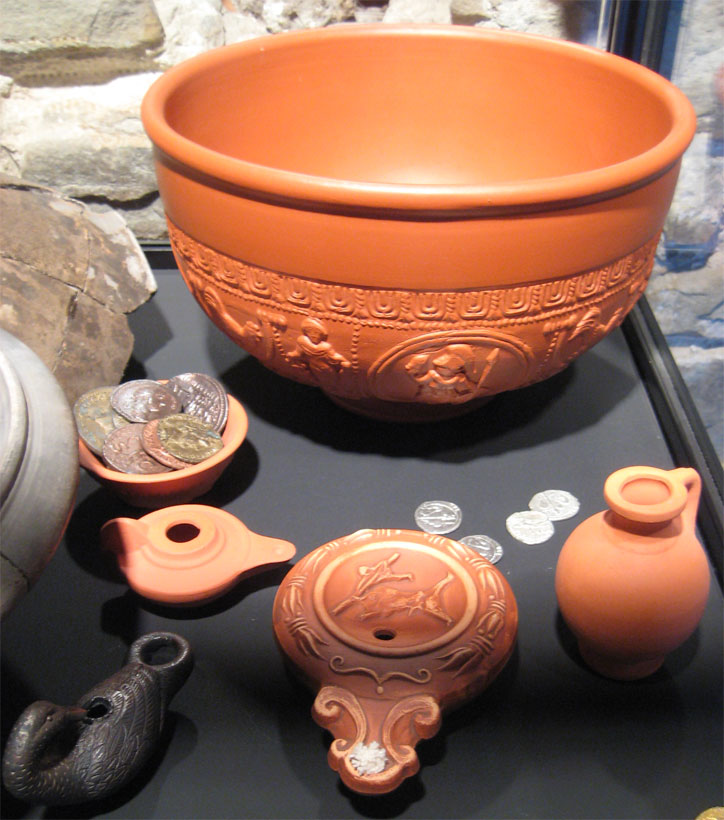
Inside the museum they had artifacts and mock-up designs to show what the fort might have looked like while it was in use. Outside some of the bases of the old buildings have been excavated and displayed but if you look carefully at the second photo below you can see the outer wall and east gate of the fort extending further than where the excavations have taken place.
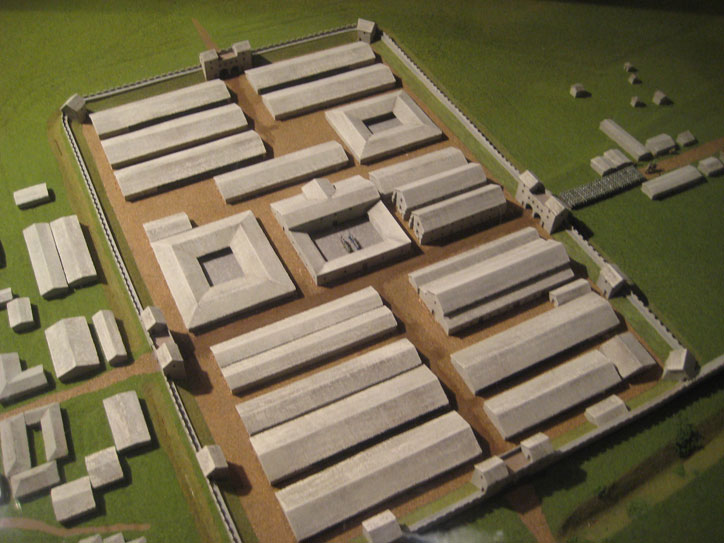
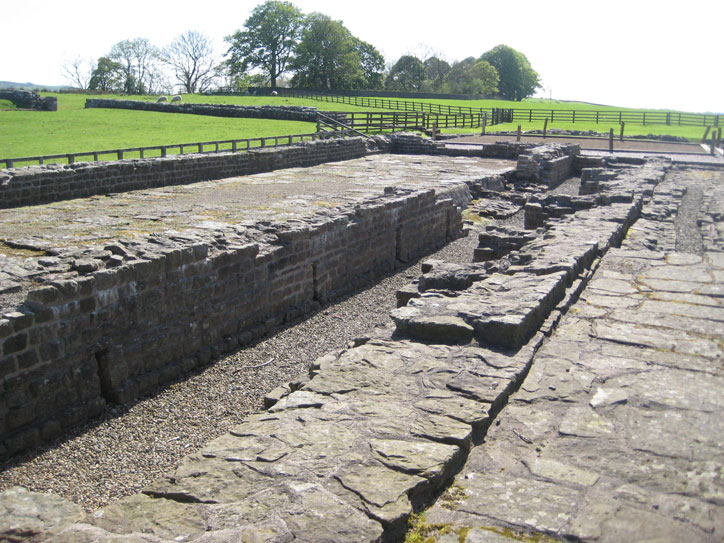
After getting some history and feeling a bit better about coming all this way for a little wall, we headed to our hotel, The Vallum Lodge, located in the national park near the half-way point of the wall’s trajectory in Once Brewed (right next to Twice Brewed, which unsurprisingly has a well-visited pub). The word vallum comes from the “w” shaped ditch in the ground that was built all along the fortification to keep the wall isolated. And here we had finally come to the right place – the wall is much more impressive at this remote middle section because it’s never been dismantled. Closer to towns the wall had been used as a source of pre-cut stone to help in the construction of medieval buildings such as castles and priories. But in this area around Steel Rig and Vindolanda an Englishman called John Clayton bought up a lot of the land in the 1830s to help preserve the wall and discourage the reusing of the stones.
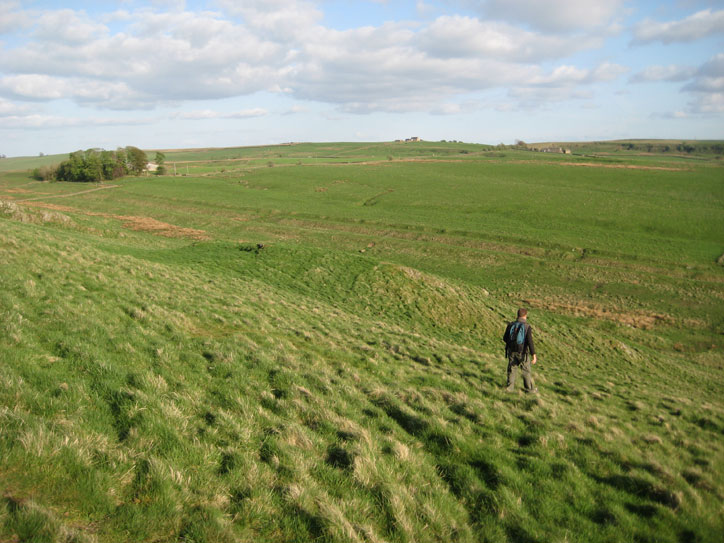
Next morning we started our long walk along the wall. It was a great day and leaving early meant we got a lot of the wall to ourselves.
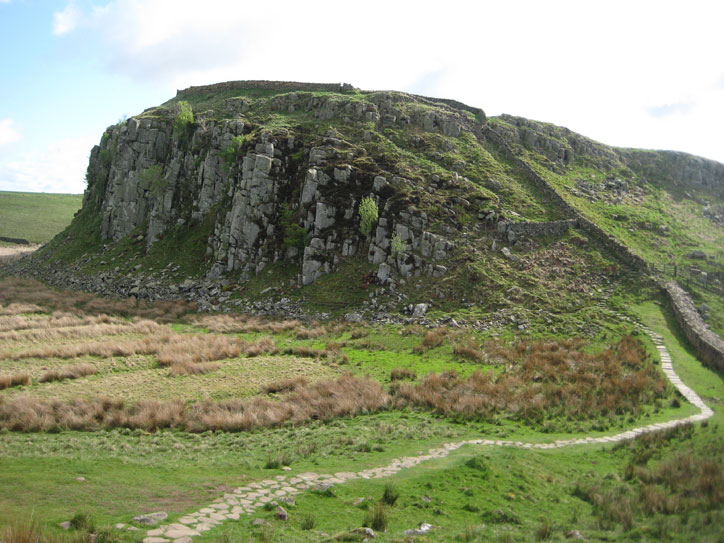
Of course we got to see a fort every Roman mile, about 1.46 km. This one is number 39 if I remember correctly.
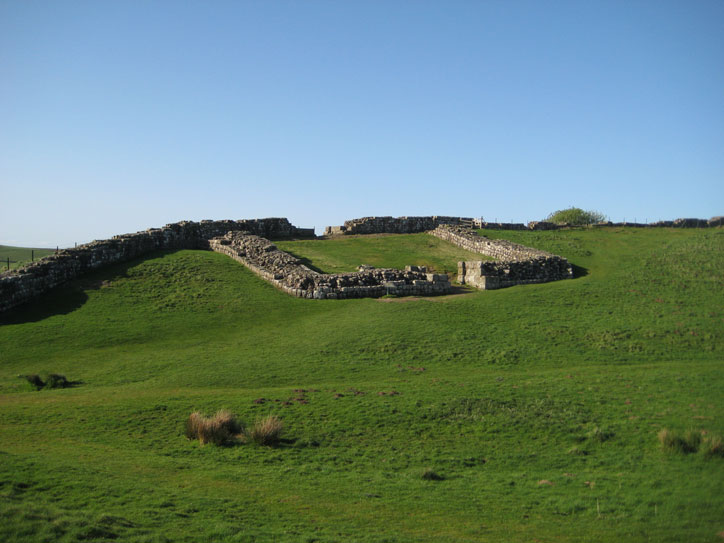
We quickly came upon the famous sycamore gap. Famous thanks to Kevin Costner’s “Robin Hood – Prince of Thieves” movie (near the beginning of the movie a kid gets chased by the sheriff of Nottingham and climbs up into the tree). No surprise that this is one of the most sought after photo-ops of the wall. Luckily we got it all to ourselves in the morning. Looking at it in the afternoon on our way back, tourist throngs were pushing each other across the gap from both sides.
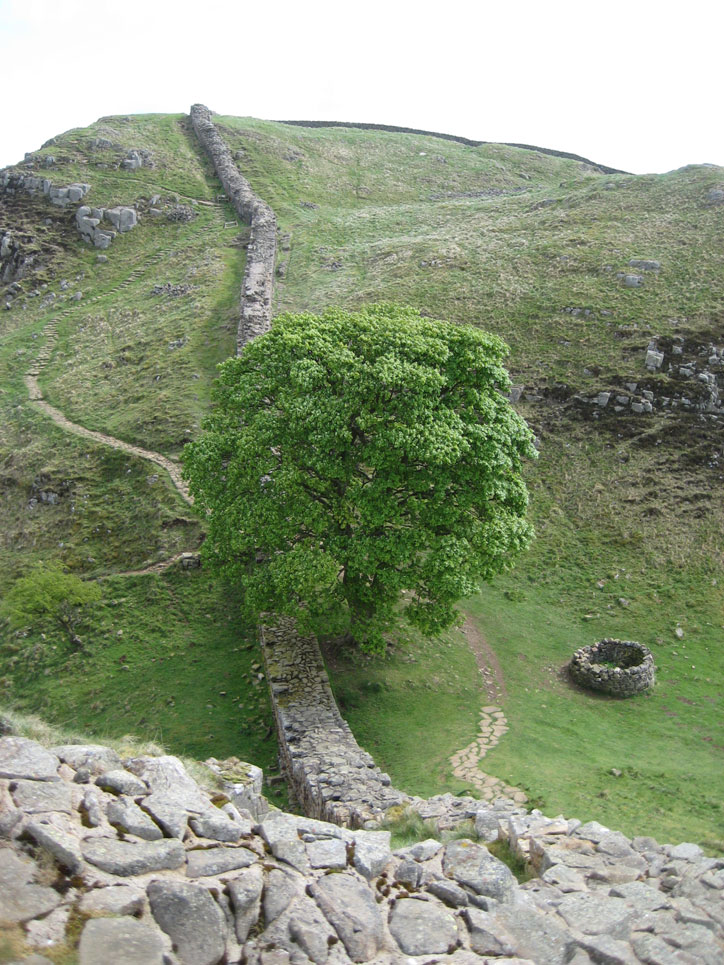
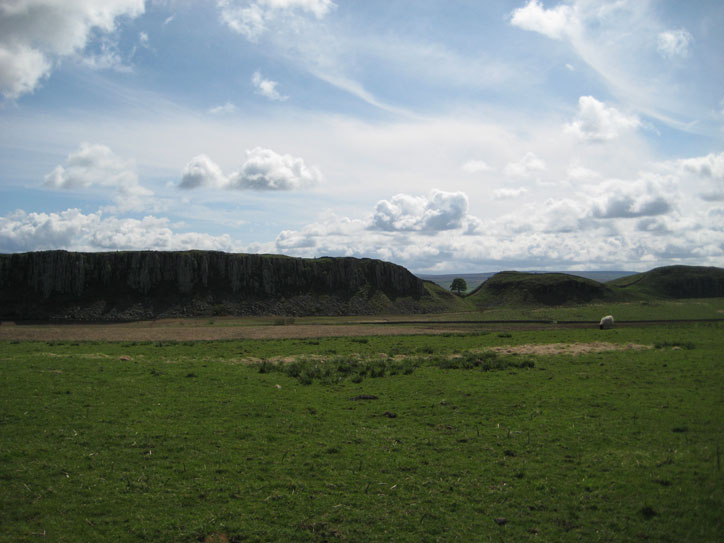
The actual border with Scotland is further north nowadays so looking over the wall today you’re just looking at more English.
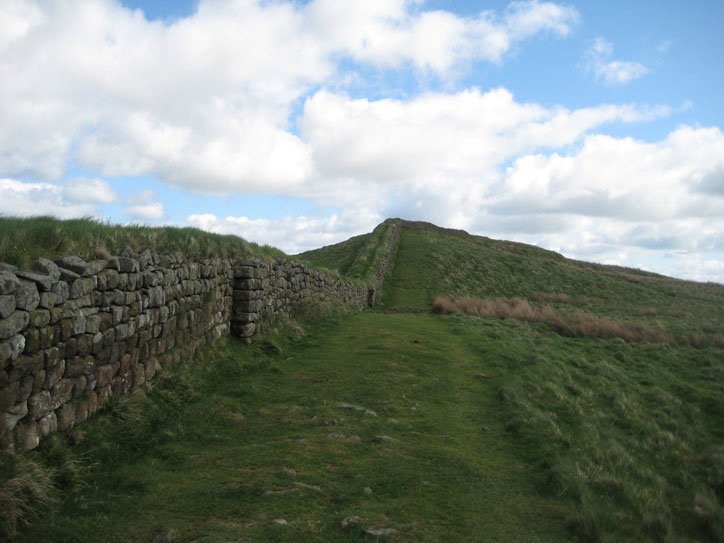
These guys are all over England so it was no surprise to see them walking the wall path with us.

By the end of the walk we ended at the mile fort of Housesteads (then Vercovicium) to explore another museum. We also ran into some lodgers from our B&B who had taken the easy way here on the tourist bus that loops around the wall sites. Housesteads boosts some impressive foundations, including the raised granary that ventilated the storage and kept vermin away by allowing dogs access underneath the building.
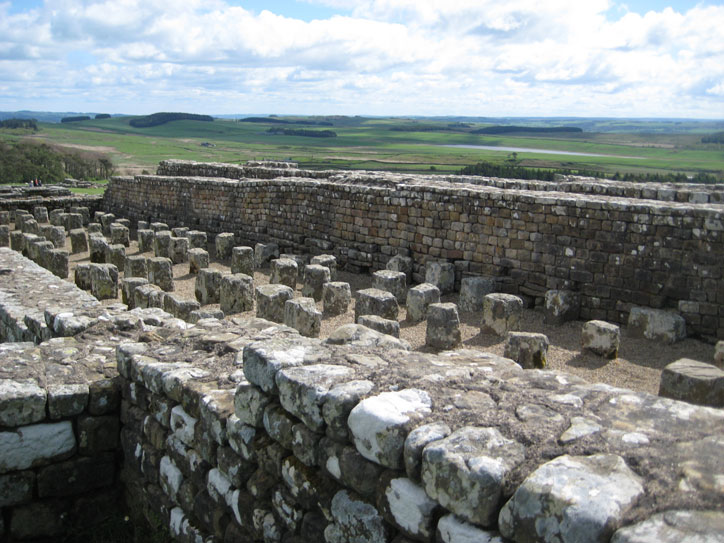
We could have conveniently taken the tourist bus back to the lodge but decided to head north into Barbarian territory and get a look at the wall from a little further away.
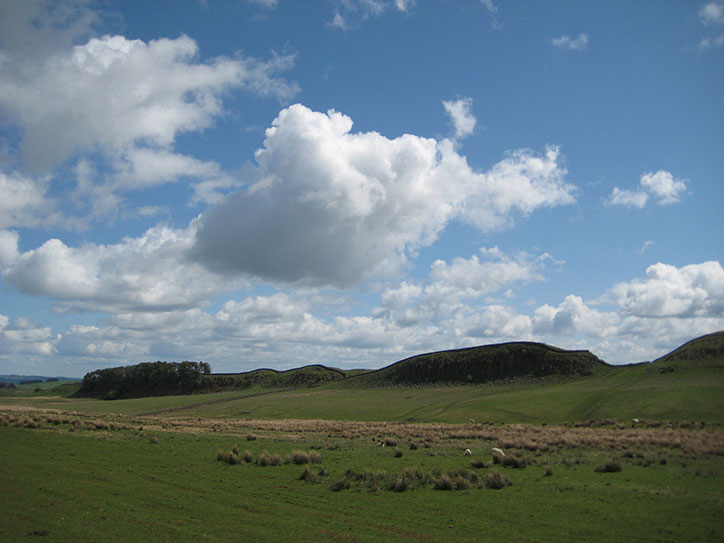
The Hadrian’s Wall Path was opened in 2003 and allows you to walk the entire wall. That morning we walked only a small part but it’s probably the most spectacular section of the wall. It might also be the most cared for by national parks and English Heritage; there are signs posted that ask you to not walk the path in winter as it causes damage to the ruins.
The next day we headed to the nearby museum and archeological excavation site Vindolanda. This was one of the larger forts in the area and it was not actually on the wall but a few kilometers south. Vindolanda has more artifacts and a recreation of the wall as it stood originally with a wooden extension at the top making it 10 meters tall. A well-tended museum and guided tour give you great insight into Roman life at the fort. They found a lot of writing tablets here, preserved by the mud and still readable. They offer a rare glimpse at the more mundane but fascinating facts of daily Roman life in the north: gossip, grocery bills, birthday cards. The presence of two large forts so close together leads me to think that the same Roman troops moved from one to the other for some reason (maybe proximity to the wall). Otherwise, it means that the wall was even more manned than we realize and a number of forts along the wall have been lost to time.
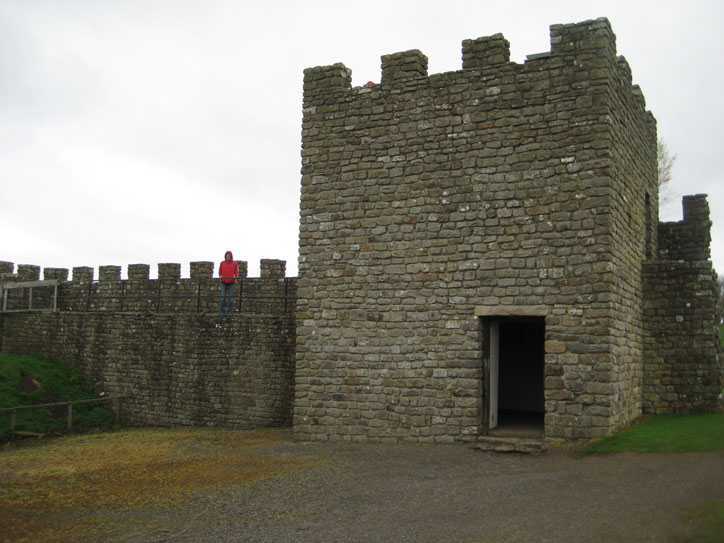
Later on Emperor Antoninus Pius built a new wall in the narrower section of Great Britain between Edinburgh and Glasgow. But that wall was quickly abandoned by Marcus Aurelius who fell back to Hadrian’s wall and due to the development of the area less of that wall remains today. In 1987 Hadrian’s wall was deservedly named a UNESCO World Heritage Site and its really worth the visit if you can arrange some nice weather.
